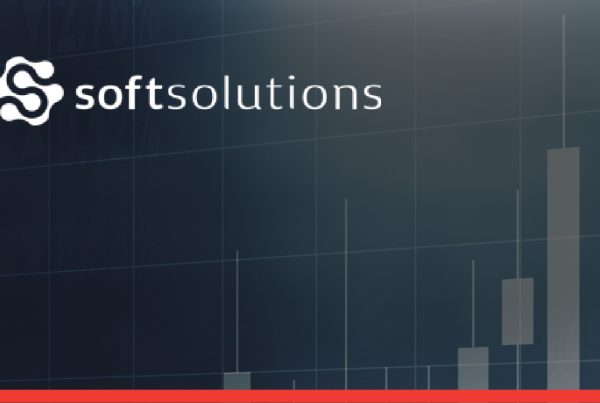SoftSolutions’ nexRates FICC e-trading platform has chosen Amazon Web Services (AWS) as the hosting provider for its SaaS deployment model
A key factor in having a reliable trading platform is the way by which disaster recovery is achieved. With AWS, nexRates platform has access to a wide range of disaster recovery tools and services that can help it quickly recover from unexpected disruptions.
AWS offers a range of disaster recovery options, including backup and restore, pilot light, warm standby, and multi-site active/active. Each of these options offers different levels of recovery time objectives (RTO) and recovery point objectives (RPO), which dictate how quickly data and applications can be restored in the event of an outage.
Backup and restore is the most basic disaster recovery option offered by AWS. It involves backing up data and applications to Amazon S3 or Amazon Glacier and restoring them in the event of a disaster. This option is best suited for businesses with low RTOs and RPOs, as data and applications may take some time to restore, hence in general not suitable for a standard investment bank’s purposes.
Pilot light is a more advanced disaster recovery option that involves maintaining a minimal version of the application infrastructure in the cloud, which can be quickly scaled up in the event of an outage. This option offers faster RTOs and RPOs than backup and restore, as the infrastructure is already in place and only needs to be scaled up.
Warm standby involves maintaining a partially scaled-up version of the nexRates infrastructure in the cloud, which can be quickly scaled up in the event of an outage. This option offers even faster RTOs and RPOs than pilot light, as the infrastructure is already partially in place and only needs to be further scaled up.
Multi-site active/active involves maintaining multiple active instances of the application infrastructure across multiple AWS regions or availability zones. This option offers the fastest RTOs and RPOs, as data and applications can be quickly restored from the active instances. This option is the one SoftSolutions generally suggests to its customers for nexRates disaster recovery.
AWS also offers a range of disaster recovery tools and services, such as Amazon CloudWatch, AWS CloudFormation, and AWS Elastic Beanstalk, which can help SoftSolutions’ cloud responsible and Support Team to, automate disaster recovery processes and reduce recovery time.
Given the mission-critical nature of nexRates application, Amazon CloudWatch can be used as a monitoring service helping detect and respond to disruptions in real-time. AWS CloudFormation is a service that automates and therefore speed up the deployment of nexRates platform.
Disaster recovery in AWS is therefore a critical component of nexRates business continuity plan. With a range of options and tools available, nexRates customers can tailor their disaster recovery strategy to their specific needs and ensure they are prepared for any unexpected disruptions. Whether through pilot light, warm standby, or multi-site active/active, nexRates customer can rely on AWS to help them quickly recover from disasters and minimize downtime.
Related to the disaster recovery topic, we must mention the important role played by the cybersecurity when dealing with complex and critical installations in AWS, like e-trading platforms.
AWS natively provides a range of security features and services to help protect data and applications. Here are some of the key cybersecurity measures that can be implemented in AWS:
Network Security – AWS provides multiple network security features to protect applications and data. Virtual Private Clouds (VPCs) can be used to isolate resources and control inbound and outbound traffic. Additionally, AWS provides security groups, Network Access Control Lists (NACLs), and other features to manage network traffic.
Encryption – AWS offers encryption options for your data at rest and in transit. You can use AWS Key Management Service (KMS) to manage encryption keys, and you can use Amazon S3 and Amazon EBS encryption features to encrypt data at rest.
Finally, it’s worth mentioning here one of the most “popular” types of hacker attacks: Cryptolocker is a type of malware (ransomware) that encrypts files on a victim’s computer and demands payment in exchange for a decryption key. It is typically spread through email attachments, malicious links, or infected websites. They can cause business disruption with severe consequences both economic and reputational.
Identity and Access Management (IAM) – IAM enables you to manage user access to AWS resources. You can create and manage users and groups, assign permissions, and set up multi-factor authentication (MFA) to enhance security.
While AWS itself is not susceptible to crypto locker attacks, it is possible for an AWS user to become infected with crypto locker and for the malware to spread to the user’s AWS resources, such as their storage or computing instances. This could potentially lead to the encryption of valuable data stored on AWS, which could have severe consequences for the user’s business or personal life. To prevent crypto locker attacks on AWS, nexRates mandates its users to follow best practices for securing their AWS accounts, such as using strong passwords, enabling multi-factor authentication, and deploying anti-malware and anti-virus software on all AWS instances. Additionally, strong RBAC policies, segregated AWS backup and recovery solutions ensure that critical data can be restored quickly in the event of an attack.





